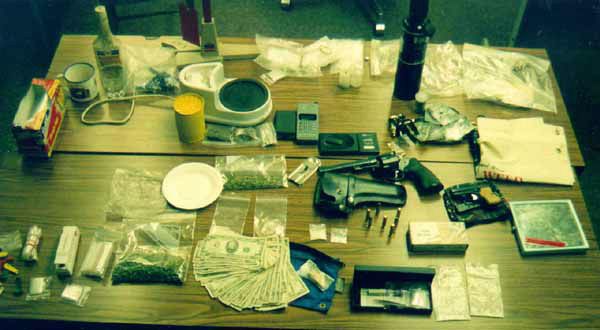

The Office of National Drug Control Policy has many resources detailing the illicit drug trade & what the US government is doing about it. Here is a useful article & a few excerpts about the changing nature of the business & how the groups involved attempt to limit their liability:
Drug Markets
The illicit drug industry can be viewed as a series of segments in a supply chain extending from fields abroad to streets at home. This segmented market view is based on the transfer of drug ownership from one organization to another in each segment. In the past, a single drug cartel owned the drug that it trafficked from its cultivation and production all the way to its wholesale distribution. Now, many large trafficking organizations specialize in specific segments of the supply chain, such as cultivation, production, transportation from source country to US border areas, and smuggling across the border into the United States. By participating in only one market segment, traffickers can concentrate their expertise and connections while limiting their overall risk.
This segmented market view is perhaps most relevant to the cocaine industry, where unified Colombian cartels have been replaced by looser networks of Colombian and Mexican trafficking organizations. Separate Colombian organizations may handle the cultivation, production, and initial offshore movement segments of the cocaine supply chain. Mexican organizations then coordinate the remaining transportation and distribution segments required for the cocaine to reach US streets. In each exchange between traffickers, ownership of the product is transferred in a manner that ensures that the supplier will be compensated regardless of the final disposition of the cocaine.
Drug submarine found in Colombia  Police say the workmanship is of high quality Police in Colombia say they have found a half-built submarine in a warehouse in a suburb of the capital Bogota. Police chief General Luis Ernesto Gilibert said Russian documents were found alongside the partially-completed vessel.
He speculated that, once completed, the submarine would have been disassembled and taken by lorry to to Colombia's Pacific or Caribbean coast. When police raided the warehouse in the suburb of Facatativa they found the building equipped with closed-circuit cameras but devoid of people. High quality Instead there was the startling sight of a sophisticated submarine under construction. "It was between 30% and 40% complete and had its engine room ready," General Gilibert said. "The technology is advanced and the workmanship of high quality."
Bogota is landlocked and lies 2,250 metres (7,500 ft) above sea level, but is a source of high-quality building materials - which may explain why it was chosen as a submarine boatyard. Submarines have been used by Columbian drug smugglers before - in 1997 two mini-subs were seized off the Caribbean port of Santa Marta. Huge But this submarine is a much bigger vessel. "In 32 years I've never seen anything like this," said Leo Arreguin, the US Drug Enforcement Administration director in Colombia. "This is huge. We're talking about being able to load up to 200 tonnes of cocaine in this submarine." Mr Arreguin said documents discovered at the site showed that two Americans may also have been involved, but did not elaborate. They are also shifting their focus to Europe, by way of West Africa. |
Top Americas stories now: Links to more Americas stories are at the foot of the page. | ||||||||||||||||||||||||||||||||||||||||||||||||||||||